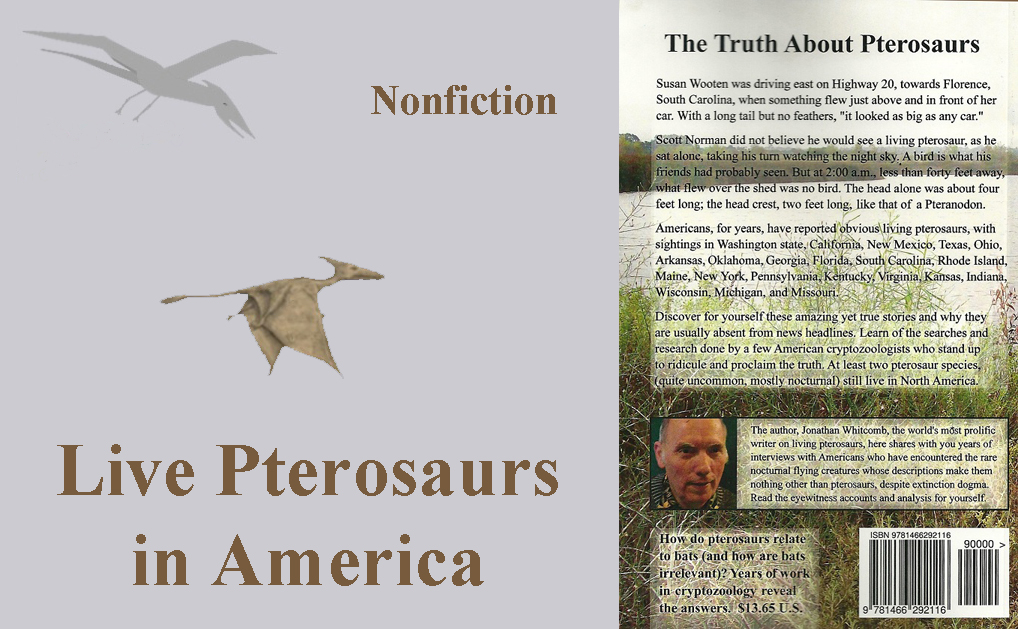Recent newspaper headlines about living “pterodactyls” . . . well, those are more rare than modern pterosaurs, at least for most of us who read the news in major or minor cities in the United States. Perhaps editors have over-reacted to the nineteenth-century newspaper hoaxes and mid-twentieth-century big-bird stories by avoiding the subject of modern pterosaurs. Modern news professionals do need to protect their reputations, I suppose.
It may enlighten us to review two of those old hoaxes in newspapers, before we review recent newspaper coverage of eyewitness reports, for some of those tall tales, contributing to nineteenth-century subscriptions, may have had a long-term influence. Getting news-media attention to recent pterosaur sightings is as difficult as pulling teeth out of a hungry ropen.
Man-Bat Civilization on the Moon (New York Sun newspaper hoax of 1835)
Understand that Sir John Herschel was an eminent British astronomer of the early nineteenth century and that he did indeed make successful observations with his telescope in South Africa. He just failed, in 1835, to observe bat-winged humanoids on the moon.
The excitement began on the other side of the Atlantic, when readers picked up their copies of the August 25th New York Sun:
“We have just learnt from an eminent publisher in this city that Sir John Herschel at the Cape of Good Hope, has made some astronomical discoveries of the most wonderful description, by means of an immense telescope of an entirely new principle.
The August 28th edition of the newspaper included:
. . . We counted three parties of these creatures, of twelve, nine and fifteen in each, walking erect towards a small wood… Certainly they were like human beings, for their wings had now disappeared and their attitude in walking was both erect and dignified… About half of the first party had passed beyond our canvas; but of all the others we had perfectly distinct and deliberate view. They averaged four feet in height, were covered, except on the face, with short and glossy copper-colored hair, and had wings composed of a thin membrane, without hair, lying snugly upon their backs from the top of the shoulders to the calves of their legs.”
The circulation of the New York Sun reached over 15,000, perhaps close to 20,000, before the newspaper admitted the hoax, later in 1835. Most newspapers in the United States have strictly avoided hoaxes in recent decades.
The 1856 Hoax of the “Pterodactyl” From Stone
The British newspaper The Illustrated London News carried this story—less fantastic, more pterosauric—in its February 9, 1856, issue, although I have not yet seen the original.
Pterodactyl Hoax in The Illustrated London News
The French railway-tunnel pterodactyl of 1856 is finally getting its obituary, albeit The Illustrated London News has no such obituary. Not that France is a fairy-tale country or that railway tunnels are figments of the imagination or that all nineteenth-century newspaper articles are always filled with lies; but a pterosaur that survives for ages embedded in rock and then survives . . . [coming] out of that rock . . . well, that pterosaur is fictional.
More Recent Pterosaur Coverage in Newspapers
Sightings in Antwerp, Ohio (Antwerp Bee-Argus weekly newspaper)
. . . two sightings over the Maumee River, Ohio: 2002 and 2003, both in the daylight heat of summer. (More detailed information is in my book Live Pterosaurs in America . . .)
Pterodactyl in Washington State
Witnesses told police he had been driving down Wenatchee Avenue and drifted into the wrong lane, against oncoming traffic. When police asked him what caused the accident, he apparently replied with a single word: “pterodactyl.”
The news was carried by two newspapers in Washington state, on December 31, 2007, and on January 1, 2008.
Purchase your own copy of Live Pterosaurs in America (third edition) and get the full account of the amazing eyewitness encounters with “pterodactyls.”
###




